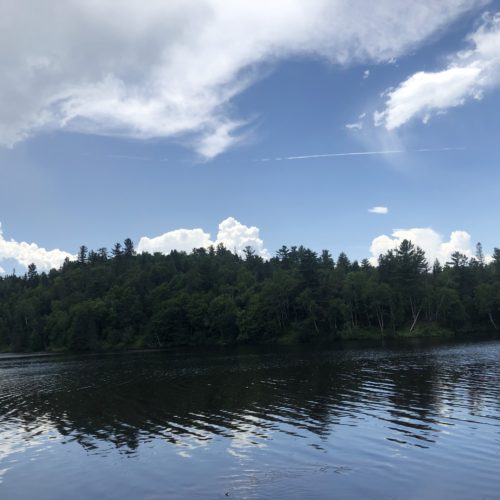10,000 Lakes

I feel a bit like Eugene Henderson’s character in the book Henderson the Rain King. It seems that every place I’ve hiked, the rain has followed.
Many of the creeks and streams are dry. And here I was, thinking that water would be plentiful because Minnesota is the Land of 10,000 Lakes.
Once I started the day with three liters of water. I didn’t make the usual brown sugar oatmeal that I so love. I opted for a protein bar and decided to push through the morning.
As the day deepened and the humidity increased, I desperately hiked not only in the pursuit of moving forward—but also to find water.
After many hours and several dry creeks, I did what any nearly dehydrated person would do. I found a spot in the shade and decided to get out of the sun.
After resting and waiting for the sun to chase the sky, I moved onward and finally reached a muddy pool.
I was ecstatic—I had access to water! Filthy, brackish, and unsafe, but water nonetheless.
It got me thinking about folks without access to clean water, those who can’t afford a filtration system.
Specifically, I thought of a significant environmental injustice right in the neighboring lake: the lead infiltration in the drinking water in Flint, Michigan—a predominately Black, poverty-stricken city.
Flint shows us how environmental injustice and racial injustice are deeply connected. I think if a Sawyer mini could purify my water in under 30 minutes, why can’t we encourage other companies to enact changes? The knowledge is there.
I sat quaffing muddy water, “Damnit, there should be more water on the trail. Minnesota, this ain’t nice!”
